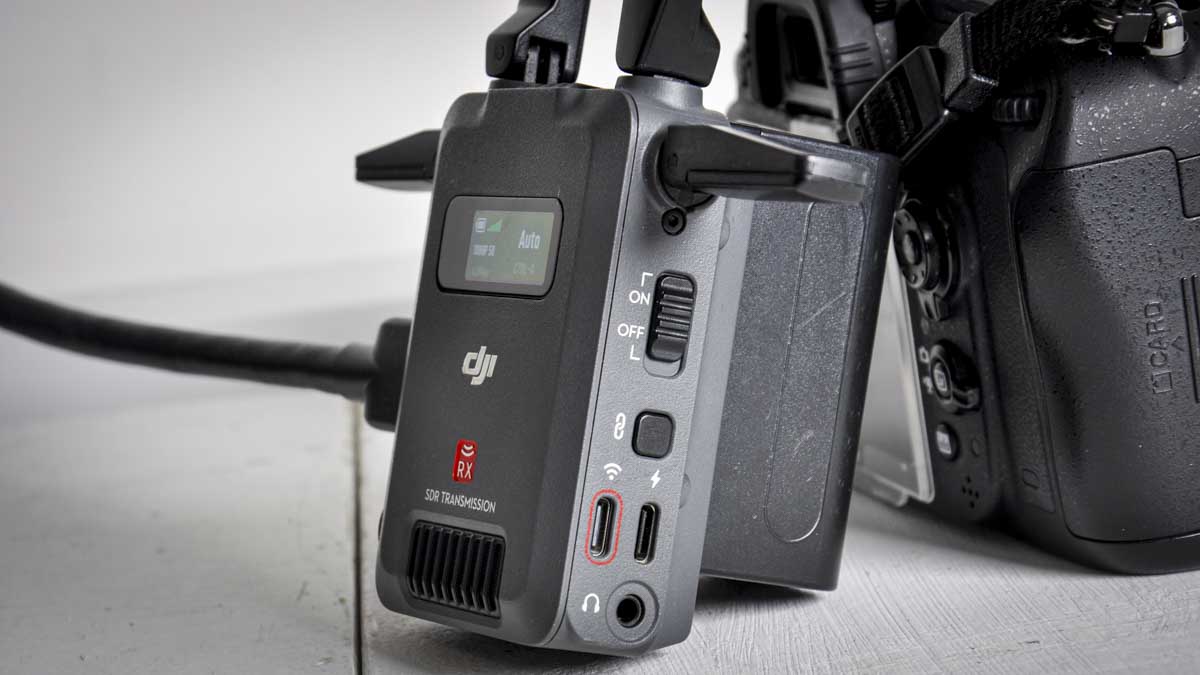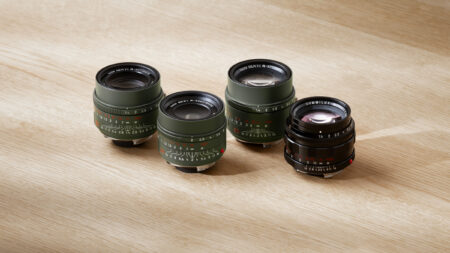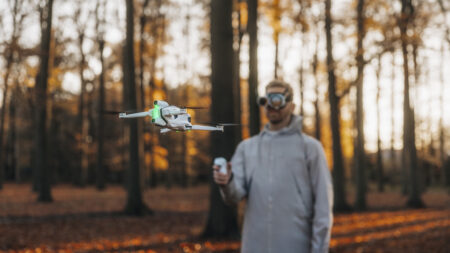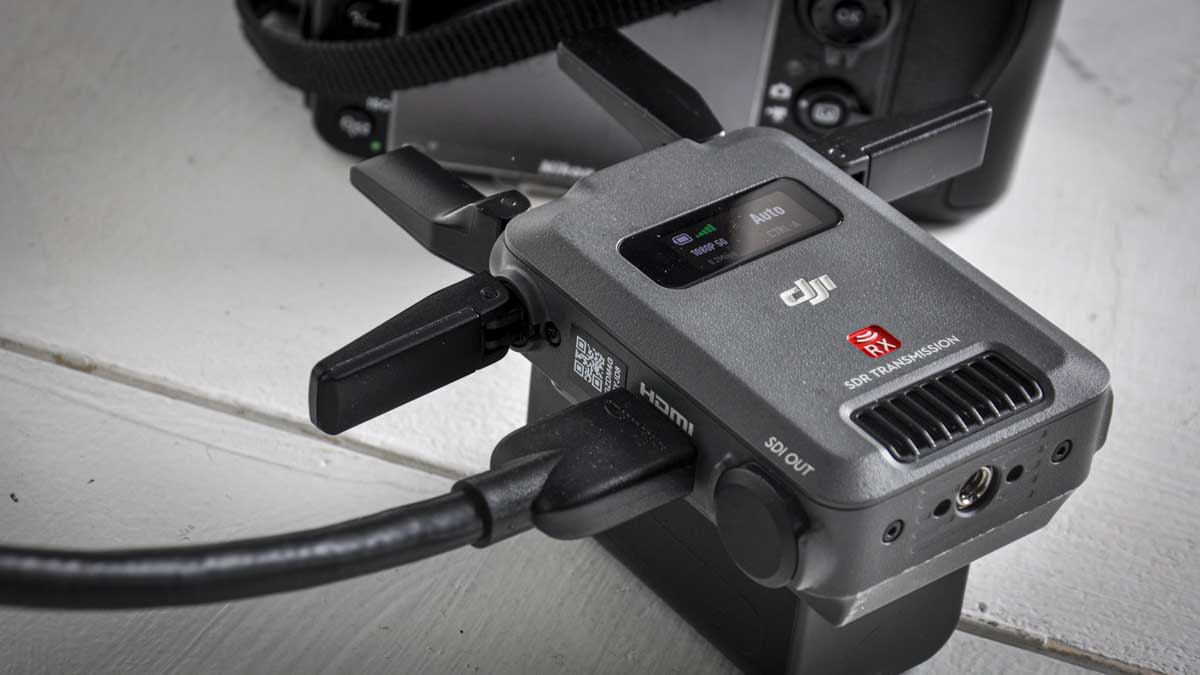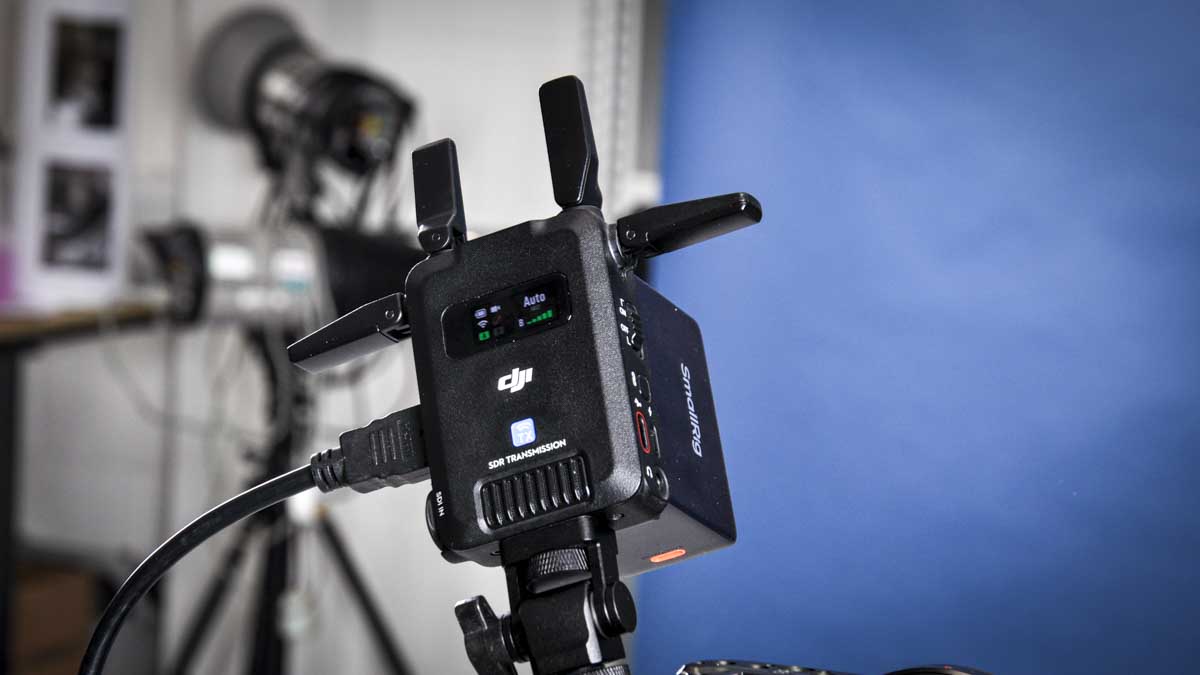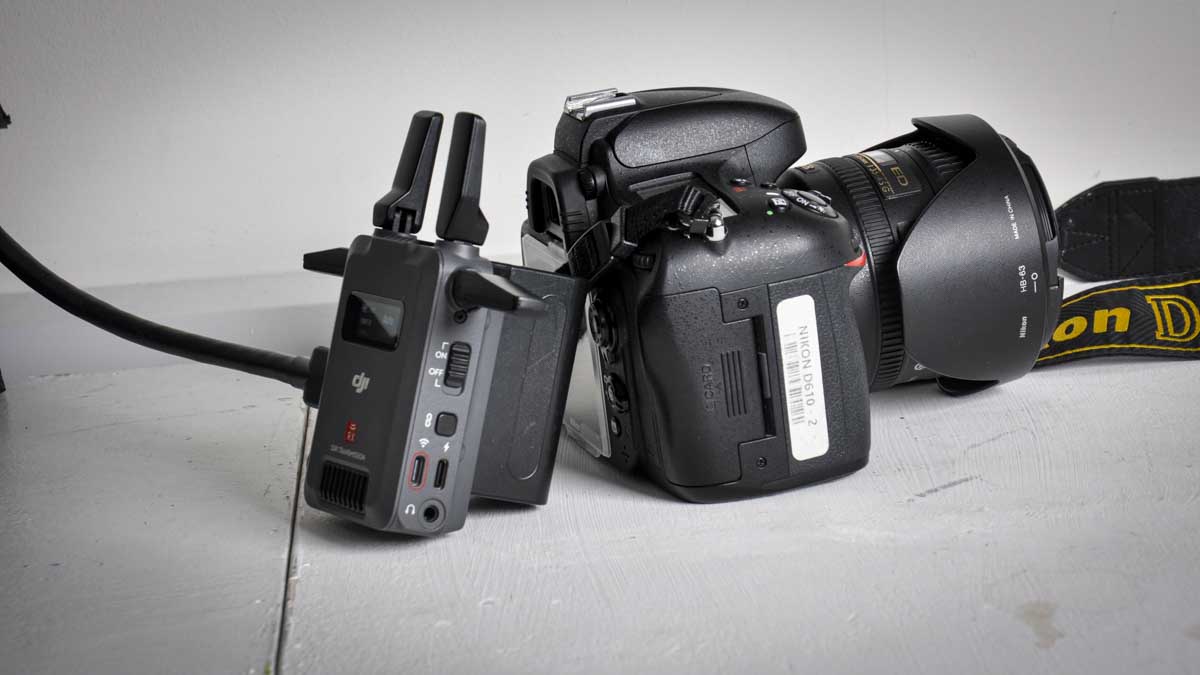When it comes to features, the DJI SDR Transmission enables video transmission up to 3 km. It also features Wi-Fi for short-range video transmission. As the units feature thesedifferent forms of wireless video transmission, they can connect in different ways. The first is Control Mode, which gives you the most powerful signal and is best for high quality, as well as taking control of other devices. Then there is Broadcast Mode, which will appeal to many users as it enables you to transmit from one camera to multiple receivers. Finally, there is Wi-Fi Mode, which allows you to transmit from the transmitter directly to a mobile device or tablet.
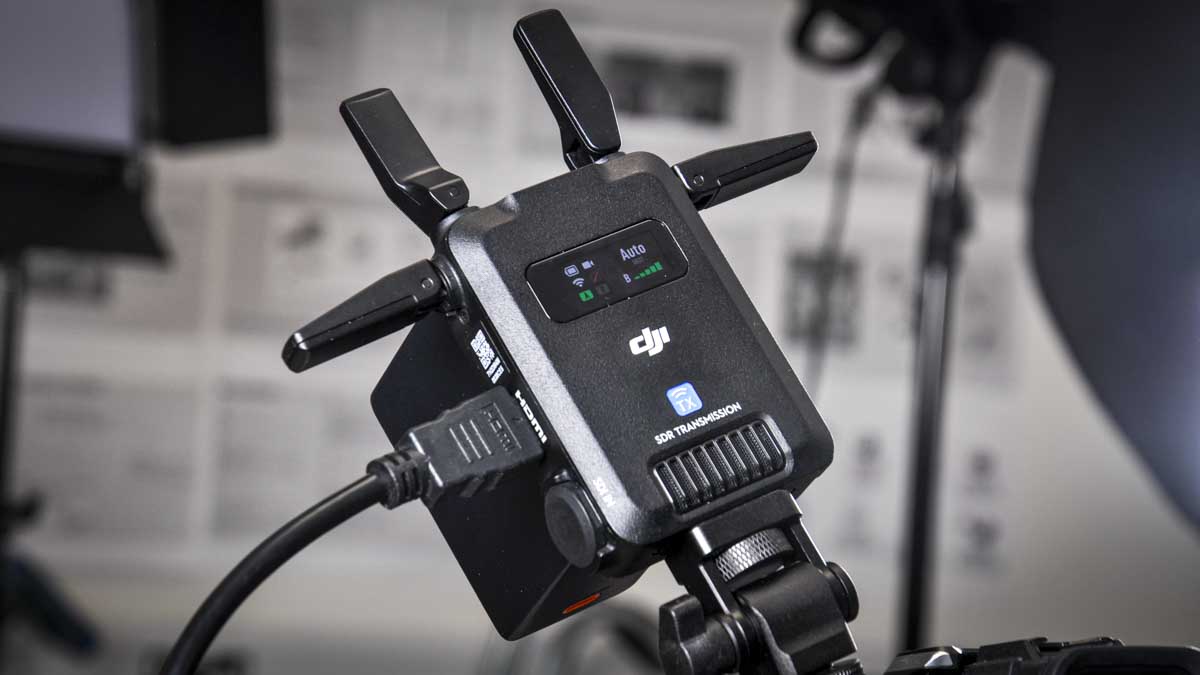
This flexibility means that each unit has multiple connection options, and as there is USB Type-C included on the receiver, you can connect to an external monitor or tablet via HDMI or through USB Type-C. This means you no longer need to buy a dedicated external monitor and can instead just use your mobile phone or tablet.
The SDR wireless communication is extremely powerful and robust, based on technology DJI has perfected through its drone series and powerful video transmission systems. This means that whilst this is an entry-level and budget-friendly wireless video transmission system, you do get a full 1080p Full HD video feed at 20 Mb/s. If you have it connected to an external monitor with recording capability, or to your mobile phone or tablet, then it is possible to capture this footage at that resolution. However, it is worth noting that if you’re filming in 4K, the transmission resolution will still only be 1080p.
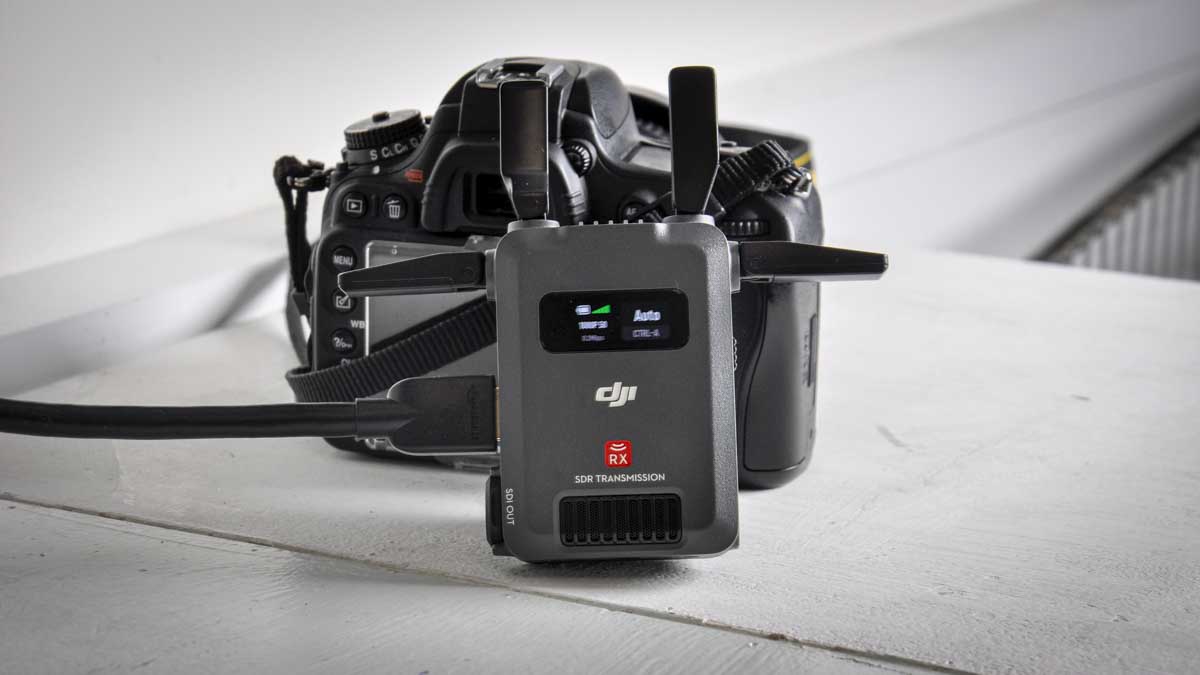
When it comes to video transmission, the DJI SDR system utilises auto frequency hopping between 2.4 GHz, 5.8 GHz, and DFS. However, it’s worth pointing out that 5.8 GHz and DFS aren’t available in all territories due to localised restrictions.
At the highest transmission quality, the latency is around 35 ms, so whilst not the fastest, it will be more than adequate for the vast majority of users and will allow for some focus pulling. If you require extremely precise video control, a wired video connection is still going to be better than this wireless video option.
If you are using a camcorder such as a Sony FX6, then you also have SDI connections. In this review, I haven’t tested that functionality, as it’s a bit beyond what we do here at Camera Jabber. However, if you do, then that SDI connection will carry the media feed from the camera through the wireless transmission to the monitor.
For most other transmission types, you can connect to a smartphone or tablet running the DJI Ronin app. This has recently been updated and includes a host of new features specifically designed for the SDR system. First, it displays the video feed in 1080p, and if you want to record that footage directly to the internal storage of the tablet or phone, that is possible. More interestingly, the display offers many advanced features typically found on standard external monitors used in video production.
You have access to LUTs, peaking, waveform, false colour, and of course, there’s the option for firmware upgrades as well as the ability to load your own LUTs, which is extremely useful for any videographer.
One of the other major features of the SDR system is that, as part of the DJI ecosystem, you can use the Ronin app to take full control of any RS gimbal that it’s attached to. This means that if you want to fully control your camera through PTP, the gimbal, and monitor wireless video transmission, then this system enables you to do so. Considering the price of the SDR, this is an extremely valuable addition that will appeal to many solo videographers as well as small to medium-sized production companies.
When it comes to power, DJI has really focused on this, especially given the different ways these transmission units will be used. As standard, they take an NP-F battery on the back of each unit— a common type used with many other external monitors and wireless transmission systems and readily available. Here at Camera Jabber, I’ve used SmallRig NP-F970s, which are well-priced and supply plenty of power.
However, if you’re going to install this on a DJI Ronin gimbal, then there is an adapter plate included in the box that allows you to easily attach it to the underside of your gimbal. Obviously, you want to keep the gimbal as light as possible, and a larger NP-F970 battery adds quite a bit of weight. The alternative power option is to connect via USB PD power, using a single cable to the gimbal. This will drain the gimbal slightly faster but makes the entire rig lighter and provides greater flexibility when it comes to powering the devices.
Finally, the units have a small screen, which displays all the connection information along with battery power status. What’s nice here is that you can access all the settings directly through this screen. Although it appears to be just a display screen, it is actually fully touch-sensitive, so by swiping left, right, or down, you get a variety of different options to access settings and change functions.
